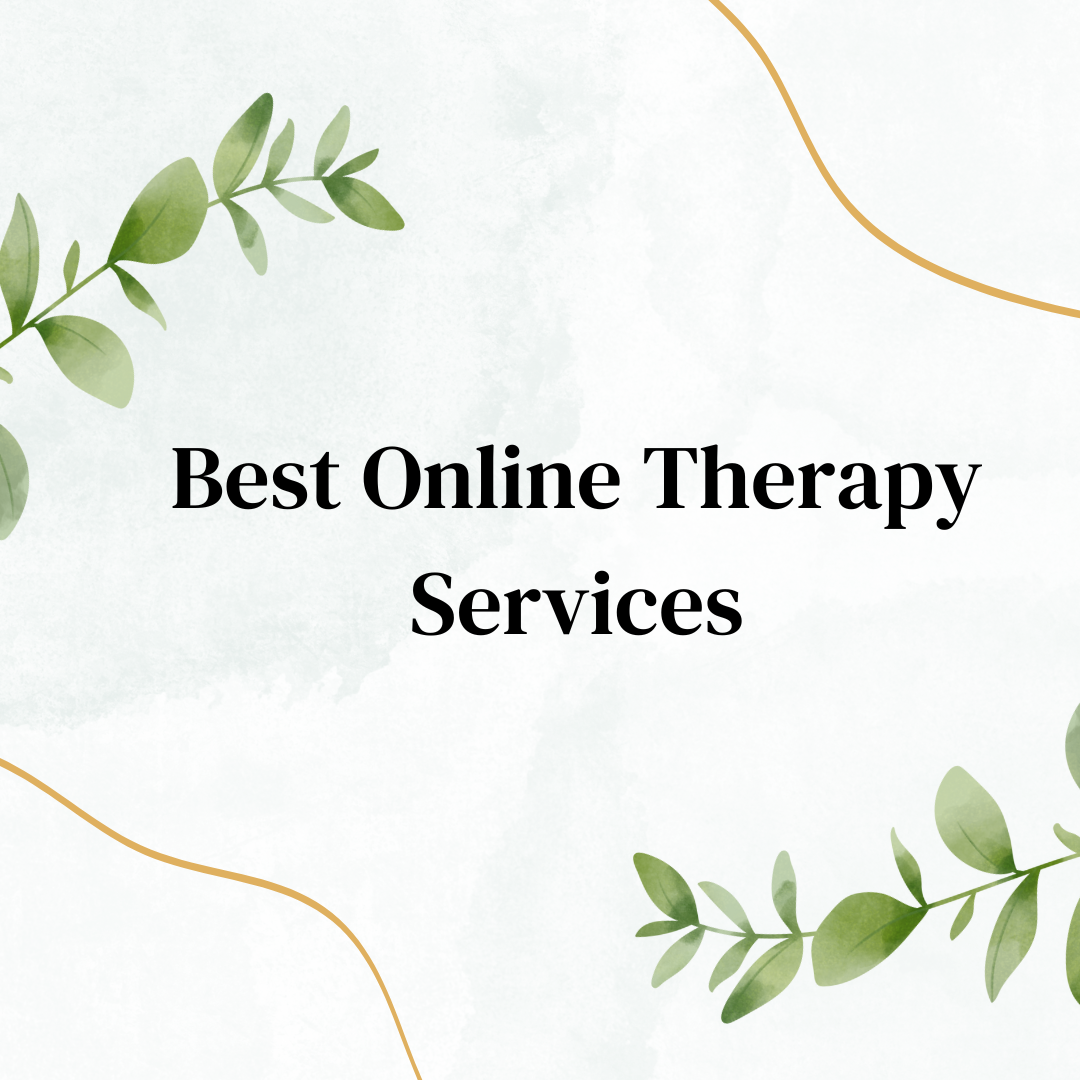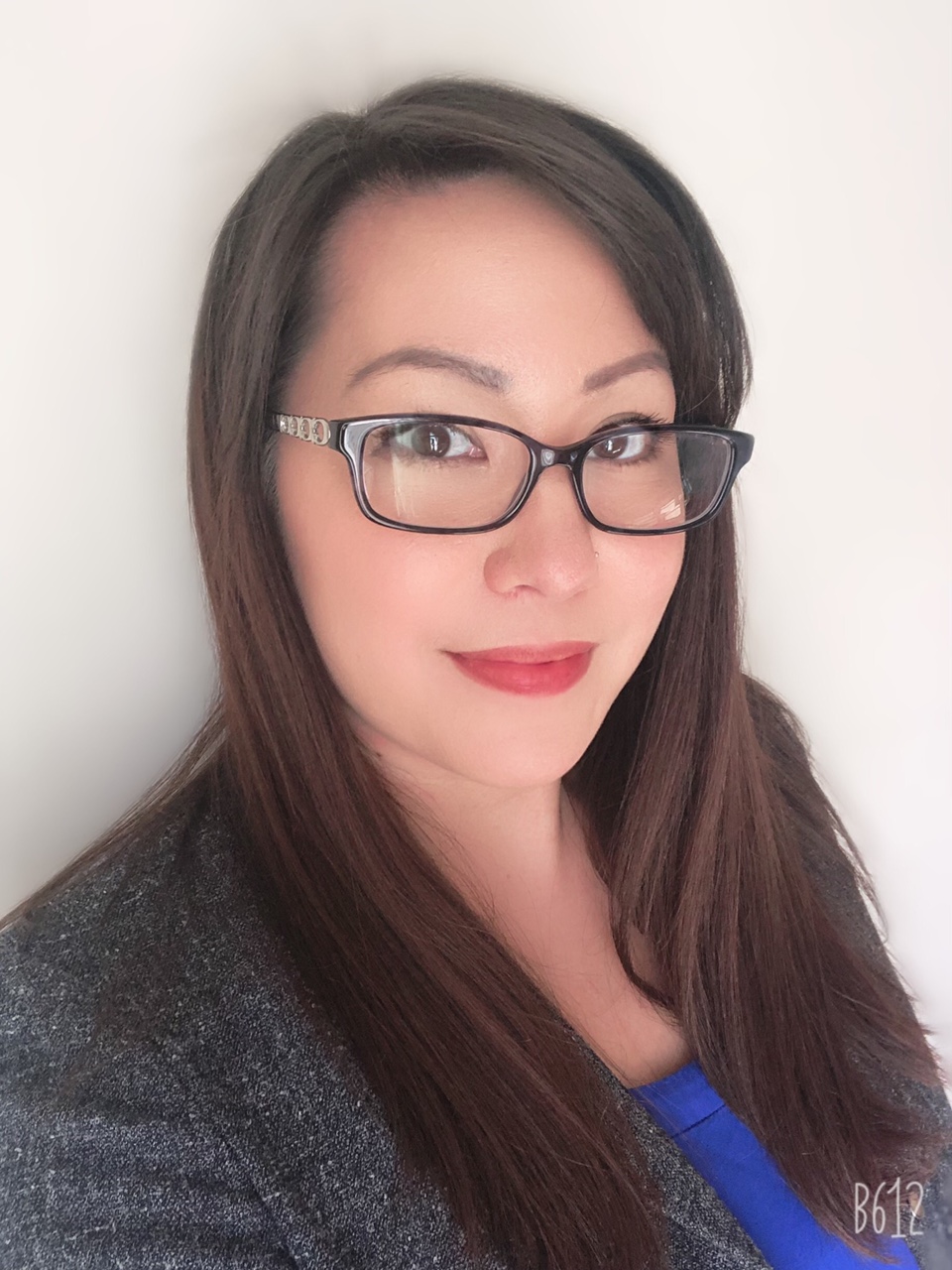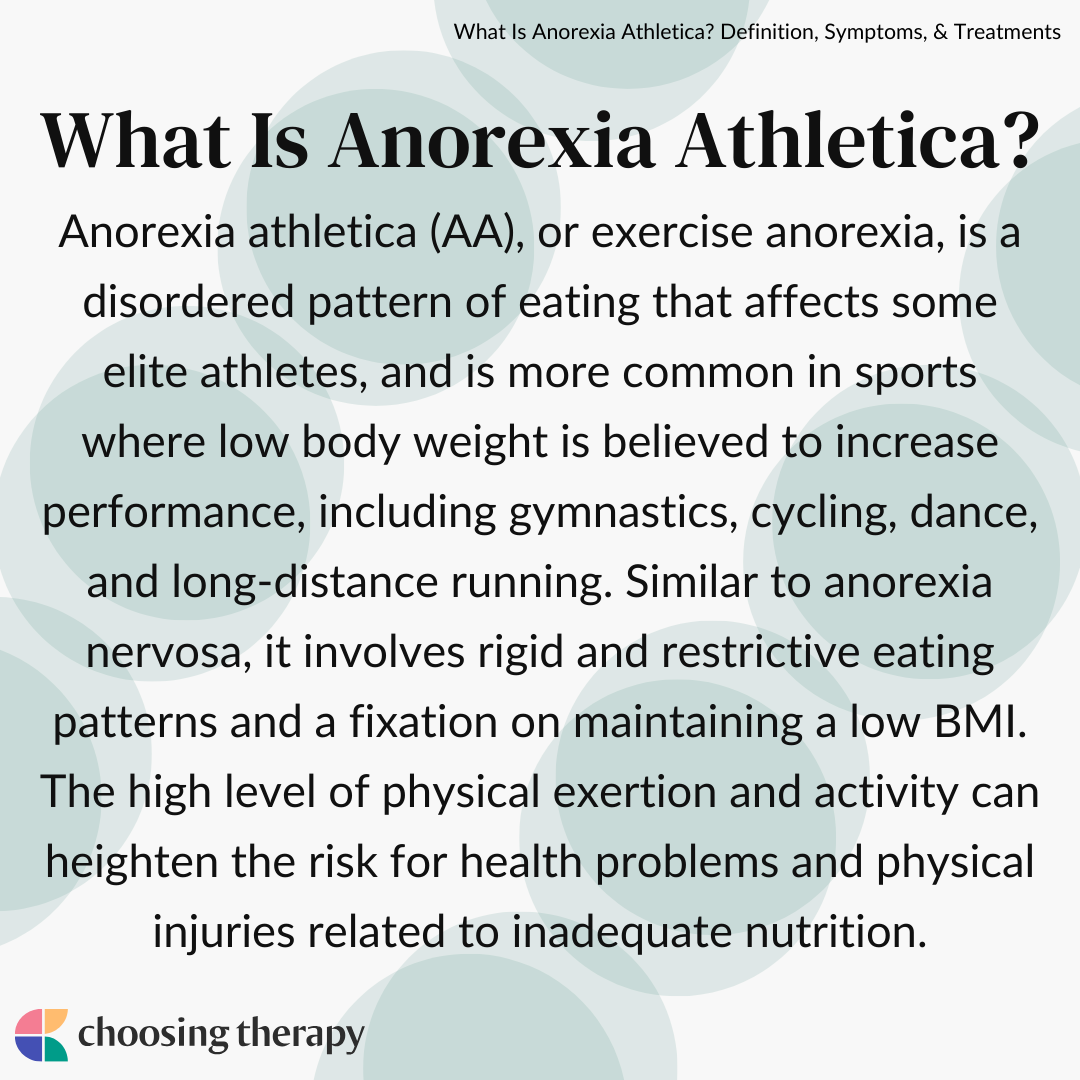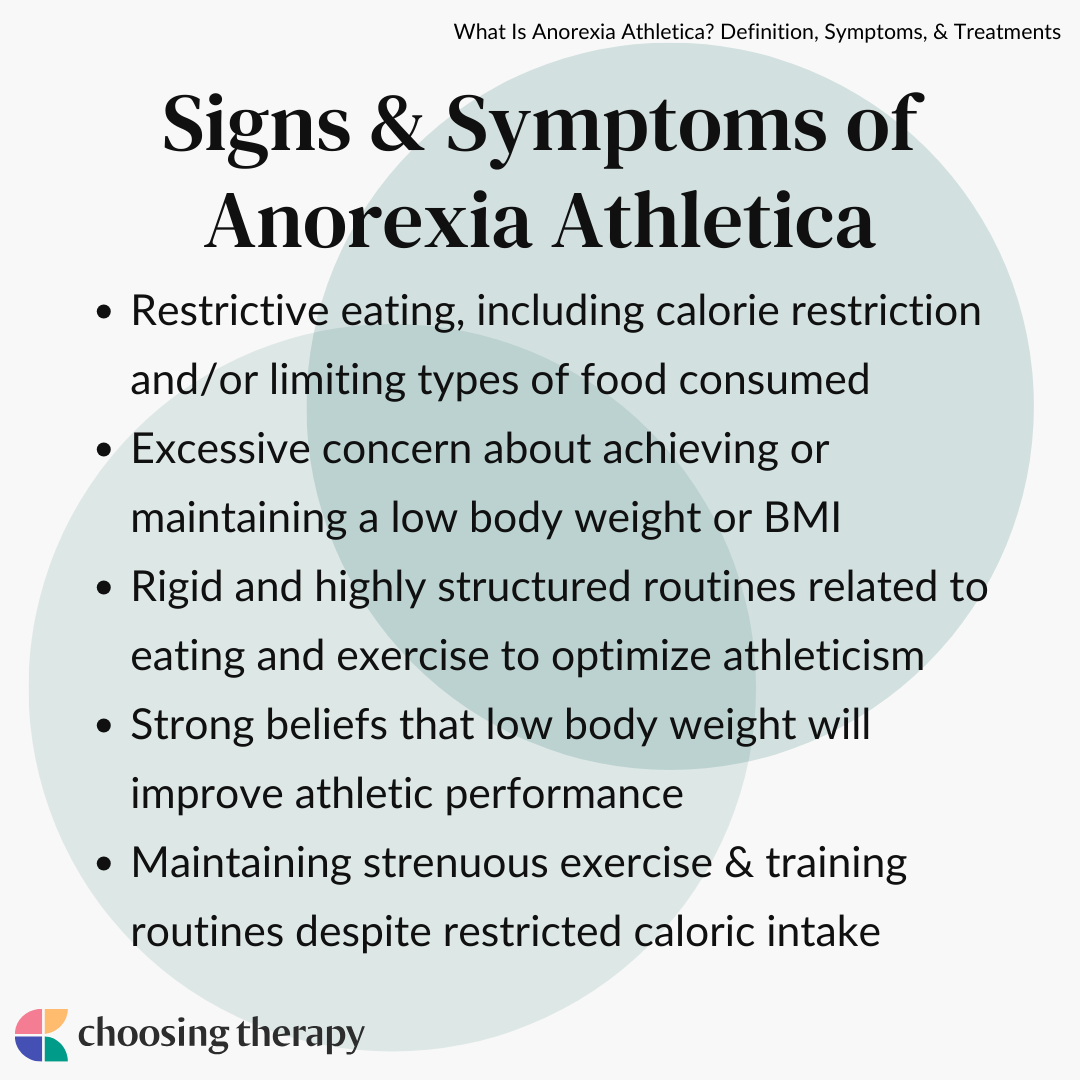Anorexia athletica is a form of disordered eating that can affect competitive athletes. While not a diagnosable condition, it shares many symptoms of anorexia nervosa, including calorie restriction and a fixation on maintaining low body weight. It increases the risk for injuries and health problems in athletes but can be treated with a combination of psychological, medical, and nutritional support.1,2
Struggling with your relationship with food? Do you find yourself constantly thinking about food or your body? It can be exhausting to have these thoughts. The good news is: you don’t have to feel this way. Take the first step towards healing by taking Equip’s free, confidential eating disorder screener. Learn more
What Is Anorexia Athletica?
Anorexia athletica (AA), or exercise anorexia, is a disordered pattern of eating that affects some elite athletes, and is more common in sports where low body weight is believed to increase performance, including gymnastics, cycling, dance, and long-distance running.2,5 Similar to anorexia nervosa, it involves rigid and restrictive eating patterns and a fixation on maintaining a low BMI. The high level of physical exertion and activity can heighten the risk for health problems and physical injuries related to inadequate nutrition.3
Some athletes with the condition meet the criteria for an eating disorder diagnosis like anorexia nervosa, but many will not. Anorexia athletica is not recognized as a distinct disorder, despite the fact that a number of studies suggest it is a common problem among elite athletes.4
Exercise Bulimia Vs. Anorexia Athletica
Anorexia athletica shares some of the same features and symptoms as a subtype of bulimia nervosa that involves compulsive exercise. While prolonged periods of strenuous physical activity and exercise are seen in both, people with anorexia athletica do not normally display the same patterns of binging and purging that are typical in bulimia.3 Most people with AA are more likely to restrict food and caloric intake rather than binge eat.
The motivations for exercise are also different in people with anorexia athletica than in people with exercise bulimia. In bulimia, strenuous exercise is used to ‘cancel out’ calories or combat weight gain from repeated binges (called eating disorder compensatory behaviors). In AA, exercise and physical activity are driven by the need for athletes to regularly train, practice, and condition themselves to boost performance in their particular sport.1,2 Both eating and exercise patterns in anorexia athletica are much more stable and consistent than in people struggling with bulimia, where they’re often sporadic in nature.3
Anorexia Nervosa Vs. Anorexia Athletica
Restricting foods and calories to lower body weight is one of the core symptoms of anorexia nervosa and is also found in anorexia athletica. The main difference between the two is that restrictive eating in AA is driven by a desire to improve athletic performance rather than physical appearance.3 Also, because AA affects athletes competing at high levels in their sport, restricting calories can more quickly lead to physical exhaustion, injuries, and health problems.2,6
Here are the key differences between anorexia nervosa and anorexia athletica:
- Eating very little vs. relative energy deficiency: Those with AA often believe that strict dieting will keep them in “top” shape for better performance. In turn, this creates an imbalance between energy intake and exercise-related engagement, leading to impaired overall physiological functioning and eventually a decline in performance.7,8
- Being in a sport: The strain to excel in sports along with an overemphasis on body weight, shape, and composition can significantly heighten the chances for athletes to develop an eating-related condition.7,8
- Excessive exercise, not just excessive dieting: Individuals with AA not only follow strict diets for sport purposes but also engage in extreme exercise. This surplus in physical activity generally puts extra stress on the athlete’s body and can increase the risk of injury and other health-related concerns.7,8
Finally, anorexia athletica is not officially recognized as a diagnosable condition, unlike anorexia nervosa. Many athletes with AA do not display the typical symptoms associated with anorexia and may even be within a normal weight range. The number of calories consumed by an athlete with AA may even seem healthy and reasonable for normal people but is not sufficient to support their extremely high level of physical activity.1
Orthorexia Vs. Anorexia Athletica
Orthorexia is an unhealthy fixation with healthy or ‘clean’ eating. Like anorexia athletica, orthorexia is not officially recognized as an eating disorder in the DSM, and both may be diagnosed as an ‘unspecified’ eating disorder. In both orthorexia and anorexia athletica, it’s common to see a rigid set of rules around the kinds of foods and ingredients that are ok to consume.9
The main difference is that anorexia athletica is specific to athletes, and the main goal of healthy eating is to maintain low body weight and improve their athletic performance. In orthorexia, there may be a number of different motivations besides athletic performance or body weight. For example, concerns about health issues, food additives, or just preferring familiar foods and consistent routines can all be behind the desire for clean and healthy eating in orthorexia.9
Is your eating disorder being made worse by OCD? Almost half of people with eating disorders also have OCD. Intrusive thoughts, including constantly thinking about food or your body, may be a sign of OCD. NOCD Therapists specialize in treating OCD and have an understanding of eating disorders. To learn more about receiving an OCD diagnosis and treatment options, schedule a free 15 minute call. NOCD is covered by many insurance plans. Visit NOCD
Signs & Symptoms of Anorexia Athletica
Because anorexia athletica isn’t recognized as an official eating disorder, there isn’t a universal list of symptoms used to diagnose this issue. There is a growing body of research that has shed light on some of the common eating habits and health issues seen in athletes struggling with AA. From this research, it’s possible to identify many of the symptoms linked to AA, but individual experiences may vary.
Common signs and symptoms of anorexia athletica include:1,2,6
- Restrictive eating, including calorie restriction and/or limiting types of food consumed
- Excessive concern about achieving or maintaining a low body weight or BMI
- Rigid and highly structured routines related to eating and exercise to optimize athleticism
- Strong beliefs that low body weight will improve athletic performance
- Maintaining strenuous exercise & training routines despite restricted caloric intake
- Physical exhaustion, fatigue, and lowered athletic performance
- Malnourishment or malnutrition resulting in nutritional or vitamin deficiencies
- Health complications like irregular menstruation, loss of bone density, and metabolic or endocrine issues
- Mood or mental health-related problems, including increased anxiety, irritability, or symptoms of depression
Complications of Anorexia Athletica
Anorexia athletica can have an extremely serious and negative effect on health. Athletes have an increased risk for certain illnesses, injuries, and health problems, and these risks are even higher for athletes with AA. Also, the mental and emotional demands of competitive sports can increase stress, pressure, and the risk of long-term complications related to AA.1,2
Extremely restrictive diets common in anorexia athletica often prevent athletes from getting the adequate nutrition and calories needed to support their active lifestyles. This can mean that when practicing, training, or competing in their sport, they’re more likely to become exhausted and injure themselves. Over time, malnutrition can cause even more serious and chronic complications for their physical and mental health.2
Some of the long-term complications related to anorexia athletica include:1,2,6
- Increased risk for eating disorders, such as anorexia nervosa
- Heightened risk for mental illnesses, such as depression
- Increased risk of serious injuries and accidents
- Loss of bone density or increased risk for osteoporosis & arthritis
- Nutritional or vitamin deficiencies or imbalances with electrolytes
- Loss of regular menstruation and infertility in women
- Higher risk for endocrine or metabolic disorders
- More likely to develop cardiovascular problems
What Causes Anorexia Athletica?
Like most mental health problems, there are a variety of factors that can contribute to anorexia athletica. Since AA is an issue that only affects serious athletes, being involved in competitive sports is the main risk factor. AA is more common in specific sports like cycling, gymnastics, running, climbing, and dance, and women are also at higher risk than men of developing AA.1,5
Risk factors for anorexia athletica include:4,5,6
- Genetics or having a family history of an eating disorder or other mental illness
- Having a highly rigid, type A personality, OCD traits, or perfectionism
- External pressure from peers, teammates, or coaches to maintain a low weight
- Engaging in sports with a high focus on performance, aestheticism, or diet culture
- Being previously diagnosed with another eating disorder
- Having a history or diagnosis of another mental health condition
- Having a long personal history of participation in athletics and sports
- Having a personal history of sports-specific dieting and training
- High levels of chronic stress, anxiety, or pressure to perform at a higher level
- A history of struggling with self-esteem or body image issues, or body dysmorphia
- Hormonal or neurochemical imbalances in the brain
Eating Disorder Help
Eating Disorder Treatment That Works – Delivered At Home. Eating disorder treatment is hard – which is why you deserve a team. Equip offers evidence-based care delivered virtually by a five-person care team, so you can achieve recovery without pressing pause on your life. We take insurance! Get a Consultation
Best In-Patient Treatment For Eating Disorders – Find the best local eating disorder treatment center for you. See personalized results and reviews to find the best treatment center covered by your insurance. Start Your Search
Affordable, Online Therapy – Are you or a loved one experiencing eating disorder symptoms? Get help from a licensed therapist. Betterhelp offers online therapy starting at $65 per week. Free Assessment
Who Is at Risk of Developing Anorexia Athletica?
Competitive athletes are at higher risk for anorexia athletica, especially if they’re involved in sports with a heavy emphasis on leanness. Females also appear to be at higher risk for all forms of disordered eating, including AA. The risk is heightened further for athletes who experience external or social pressure to be thin or for people with perfectionistic personality traits.1,2,4
Athletes may be at higher risk for anorexia athletica if they participate in one or more of these sports:1,2,5,6
- Ballet
- Swimming
- Gymnastics
- Jockeying
- Cheerleading
- Swimming
- Long-distance running
- Cycling
- Climbing
Warning Signs of Anorexia Athletic
If there is an athlete in your life and you suspect that they may be battling anorexia athletica, there are ways to tell, such as excessive exercise beyond their training regimen, physical signs like fatigue or more frequent injuries, or constant body checking.
Some of the outward warning signs that you may observe in a person struggling with anorexia athletica include:1,3,4,5
- Obsessing over exercise, constantly talking about exercise, planning their day around it, and becoming distressed if they miss a workout.
- Excessive exercising, beyond what’s necessary for health or training purposes, or exercising even if they are sick, injured, or exhausted.
- Following an overly strict and inflexible exercise routine, often at the expense of other activities, social engagements, or responsibilities.
- Visible physical signs like weight loss, extreme fatigue, frequent injuries (fractures, muscle strains), and menstrual irregularities in females.
- Observable mental/emotional issues, mood swings, irritability, anxiety, or depression related to exercise, body image, or weight.
- Denying any concerns about their exercise habits and becoming defensive if you question them about it.
- Exercising despite illness, injuries, or exhaustion, skipping important events to work out.
- While not always present, those with anorexia athletica may also exhibit disordered eating behaviors like restrictive eating, food avoidance, excessive calorie counting, etc.
How Is Anorexia Athletica Diagnosed?
Because anorexia athletica isn’t officially recognized as an eating disorder or medical diagnosis, it can be more difficult to identify and treat. For this reason, AA is often diagnosed by licensed medical or mental health clinicians as an ‘other specific feeding and eating disorder’ (OSFED).3,6
In most cases, eating disorders are diagnosed through a structured intake or assessment appointment with a mental health therapist, psychologist, or medical doctor. Sometimes, clinicians will use a structured assessment to identify and diagnose anorexia athletica. Other times, the diagnosis is made after the clinician is able to ask general questions about a person’s symptoms and eating and exercise patterns.10
By the time a person seeks professional help for an eating disorder, they may be struggling with health complications or nutritional deficiencies related to their AA. Because of this, it’s not uncommon for medical doctors to be involved in the diagnosis of an eating disorder. The results from abnormal blood work or other medical tests, in addition to low body weight, may cause a doctor to suspect an eating disorder. In these cases, they often make a referral to a licensed mental health professional who specializes in eating disorders to confirm the diagnosis.
Treatment for Anorexia Athletica
The treatment recommended for anorexia athletica is a multidisciplinary approach, which helps to address the unique psychological, medical, and nutritional needs of someone recovering from an eating disorder.1,10 Most of the time, therapy is recommended in addition to appointments with a dietician, nutritionist, and/or appointments with a medical provider or sports medicine specialist.
Struggling with your relationship with food? Do you find yourself constantly thinking about food or your body? It can be exhausting to have these thoughts. The good news is: you don’t have to feel this way. Take the first step towards healing by taking Equip’s free, confidential eating disorder screener. Learn more
Levels of Care for Anorexia Athletica
There are different treatment settings that correspond to higher and lower levels of eating disorder treatment.11 People with more severe or acute cases of anorexia often need to begin treatment at a higher level of care and then step down once their symptoms stabilize. People with mild symptoms may be able to start treatment at a lower level of care, like outpatient therapy. Each treatment facility may use slightly different kinds of therapy and treatment approaches.
The severity of symptoms and risk factors is the primary factor that determines the level of care needed and is usually determined in a clinical assessment with a licensed medical or mental health professional. Most of the time, higher levels of care are shorter-term, structured treatments aimed at helping the person stabilize. Lower levels of care are often longer-term and are aimed at preventing relapse and resolving underlying issues.
The levels of care for eating disorder treatment include:11
- Inpatient hospitalization: Inpatient hospitalization for eating disorders is sometimes needed to help people with severe symptoms or complications related to anorexia and may be provided in a psychiatric or medical facility. Normally, inpatient stays are short-term (1-2 weeks) and are focused on helping to address immediate risks and stabilize the person’s symptoms or health issues.
- Residential treatment: Residential treatment for eating disorders is usually provided in specific treatment facilities that specialize in eating disorders. The types of treatment offered in residential treatment vary but normally include a blend of individual therapy, group therapy, skills groups, and appointments with dieticians and nutritionists.
- Partial hospitalization program: Partial hospitalization programs (PHPs) are often used as a step-down from inpatient care and usually involve going to a facility five days or more a week during the day. In a PHP program, there is usually a structured schedule that includes time for individual therapy, group therapy, skills groups, and other therapeutic activities related to a person’s recovery.
- Intensive outpatient programs: Intensive outpatient programs (IOPs) (IOPs) are multidisciplinary outpatient treatment programs that meet about three days per week. Most IOP programs for eating disorders involve a mix of individual therapy, eating disorder group therapy, and other therapeutic activities that focus on coping skills. Most IOPs for anorexia also involve support from a dietician or nutritionist and medical monitoring of weight, nutrition, and overall health during the recovery process.
- Outpatient therapy: Outpatient therapy for eating disorders is the lowest level of treatment and involves once- or twice-weekly therapy sessions. This can involve individual therapy sessions, group therapy, and/or family or couples sessions. Outpatient therapy is what most people think of as ‘therapy’ or ‘counseling,’ and may be provided in clinics, offices, or even online.
Therapy Options for Anorexia Athletica
Therapists use a wide range of different approaches to help people struggling with disordered eating, providing a number of good options for people looking for treatment. Therapy can be provided in group, individual, or family counseling sessions that occur in an office setting as well as options for online therapy. Because eating disorders are a specialized area of counseling, it’s important to find a therapist who has knowledge and experience in treating disordered eating.
Therapy options for anorexia athletica include:12
- Cognitive behavioral therapy (CBT): CBT for anorexia often involves restoring weight, developing more flexible eating habits, and addressing irrational thoughts and fears related to eating. Exposure therapy techniques are often used in CBT to help people overcome aversions to specific foods. Treatment length can vary, but 12-24 sessions is an average treatment cycle for CBT. CBT-E is a more specialized treatment used for the treatment of eating disorders and may be helpful to people struggling with AA.
- Dialectical behavioral therapy (DBT): A specific kind of DBT for eating disorders called Radically Open DBT (RO DBT) is sometimes recommended for people with anorexia and focuses on helping people identify and change rigid and controlling patterns related to their disorder. This form of DBT often involves a combination of individual and group therapy sessions that focus on developing healthier and more flexible coping skills. 30 sessions is the average length of treatment for RO DBT.
- Family-based therapy: Family-based therapy, called the Maudsley Method, is often recommended for adolescents struggling with disordered eating, but it can also be helpful for some adults struggling with AA. In family-based treatment, family members are provided with specific information about how to support eating disorder recovery. A normal length of family-based treatment for anorexia is about 15-20 sessions.
Medications for Anorexia Athletica
Eating disorders often co-occur with other kinds of mental health conditions like anxiety, OCD, and depression. When this is the case, it is sometimes helpful to combine therapy with medications to help manage symptoms related to mood or anxiety. When there are no other mental health conditions, medication is not typically recommended. At this time, there are no FDA-approved medications for the treatment of anorexia or other eating disorders.10
Nutritional Support for Anorexia Athletica
Most people with anorexia athletica will be recommended to consult with a registered dietician or nutritionist to help them make healthy changes to their eating habits. Nutritional support for eating disorders is often focused on helping the person restore their weight (if underweight) and develop individualized meal plans.10 This nutritional guidance is often an essential part of treatment for athletes struggling with AA, who often have different nutritional needs than non-athletes. Often, nutritionists will consult with therapists and medical doctors involved in a person’s treatment.
When to Seek Help for Anorexia Athletica
Untreated, anorexia athletica can worsen over time, negatively impacting an athlete’s physical health, mental health, and even athletic performance. The good news is that anorexia athletica is usually treatable, and many people begin their recovery by making an appointment with a licensed therapist, sports medicine specialist, or medical doctor. It’s a good idea to get professional help if you notice the signs of an eating disorder or AA, especially if you suspect it’s having negative impacts on your physical or mental health.
Finding a therapist who specializes in eating disorders or sports psychology is recommended for anorexia athletica. Depending on where you live, you may be able to find a therapist who is a Certified Eating Disorder Specialist (CEDS), which means they’ve received intensive training on eating disorder treatment. Many people looking for an eating disorder therapist begin their search online by using a free therapist directory that allows them to narrow their search by location, insurance type, and specialization. There are also several online eating disorder programs, like Equip Health or Within Health, that offer care from the comfort of your own home.
What’s the Long-Term Outlook for Someone With Anorexia Athletica?
The long-term outlook for anorexia athletica can vary depending on the person, their overall health, severity of the condition, access to treatment, and their willingness to engage in recovery efforts. Generally, the prognosis for those with AA is often good. With early intervention, comprehensive care, and solid support, affected individuals can prevent AA from worsening, experience significant improvements, and increase the likelihood of successful long-lasting results.1,10
As with any type of therapeutic care, this is a gradual process, and setbacks can occur, at which point reengaging in treatment may be necessary. That said, while some people may achieve full recovery and no longer require active treatment, others may need to continue managing symptoms and seeking ongoing support throughout their lives. Additionally, because of AA many sufferers develop chronic mental/physical conditions which may warrant consistent medical care.1,10
In My Experience
Additional Resources
To help our readers take the next step in their mental health journey, Choosing Therapy has partnered with leaders in mental health and wellness. Choosing Therapy is compensated for marketing by the companies included below.
Eating Disorder Treatment
Eating Disorder Treatment That Works – Delivered At Home. Eating disorder treatment is hard – which is why you deserve a team. Equip offers evidence-based care delivered virtually by a five-person care team, so you can achieve recovery without pressing pause on your life. We take insurance! Get a Consultation
In-Patient Treatment For Eating Disorders
Find the best local eating disorder treatment center for you. See personalized results and reviews to find the best treatment center covered by your insurance. Start Your Search
Online Talk Therapy
Are you or a loved one experiencing eating disorder symptoms? Get help from a licensed therapist. Betterhelp offers online therapy starting at $65 per week. Free Assessment
Eating Disorders & OCD
Is your eating disorder being made worse by OCD? Almost half of people with eating disorders also have OCD. Intrusive thoughts, including constantly thinking about food or your body, may be a sign of OCD. NOCD Therapists specialize in treating OCD and have an understanding of eating disorders. To learn more about receiving an OCD diagnosis and treatment options, schedule a free 15 minute call. NOCD is covered by many insurance plans. Visit NOCD
Best Online Therapy Services There are a number of factors to consider when trying to determine which online therapy platform is going to be the best fit for you. It’s important to be mindful of what each platform costs, the services they provide you with, their providers’ training and level of expertise, and several other important criteria.

Eating Disorders: Types, Treatments & How To Get Help
If you or a loved one are dealing with an eating disorder, know you’re not alone. Treatment can significantly help improve thought patterns and symptoms that can contribute to eating disorders, and having a robust care team can be an effective prevention strategy long-term.
Find a therapist for eating disorders
Get the help you need from a therapist near you
City or zip Search








